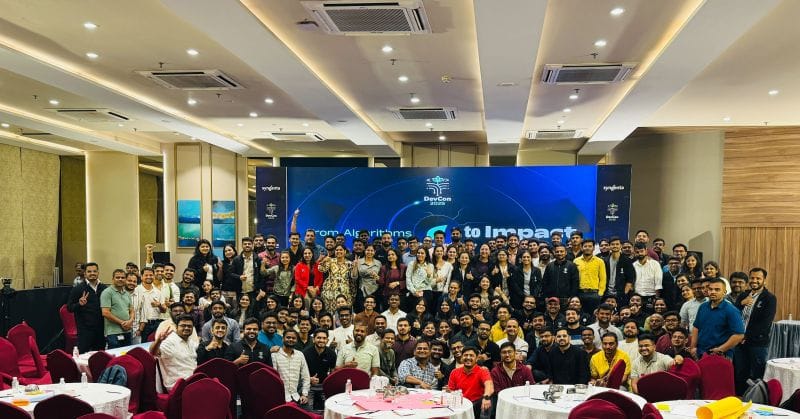Syngenta: Driving AI adoption through hackathons
How Syngenta introduced AI gateways to 100 employees through a company-wide hackathon, combining secure access, model governance, and hands-on experimentation.

Every year, Syngenta’s digital organization hosts DevCon, an internal conference that brings together engineering and business teams from Pune, Brazil, the U.S., and Europe.
The 2025 edition revolved around a single theme —> AI. With growing focus from leadership on how artificial intelligence can transform operations, the team decided to make the conference hands-on. They introduced a global AI hackathon, inviting nearly 100 participants across 22 teams to build real solutions using AI.
There were no fixed problem statements. Teams picked their own challenges, from grower-facing apps to DevOps automation, and used AI to rethink how Syngenta works.
But the goal went beyond just building prototypes. It was also about educating Syngenta’s teams on a new way to access and manage AI across the company.
Simplifying how teams work with AI models
For Syngenta, the hackathon was as much about learning AI infrastructure as it was about building AI solutions.
To make experimentation easier for everyone, the team made Portkey the single gateway to all AI models used in the event, giving both technical and non-technical participants a unified, governed way to work with AI.
Through Portkey's AI gateway, every participant, developer or business analyst, could access models like GPT-5, GPT-4o, Claude, AWS Bedrock, and Gemini from one place.
Access control was seamlessly integrated with Syngenta’s Active Directory setup. Once added to the hackathon workspace, users could instantly create their own API keys, configs, and playground experiments.
A central platform team managed guardrails, budgets, and model integrations, ensuring governance in the background while teams freely explored on their own.
Use cases built during the hackathon
Unlike traditional hackathons, Syngenta’s teams were free to choose their own challenges. This open format led to a diverse range of ideas across domains, from grower-facing apps to internal automation.
Some teams focused on report generation in digital agriculture. These reports are submitted to regulatroy bodies by growers, used for public data reporting.
When our teams came together at Syngenta's DevCon 2025, we saw more than code - ideas of better farming solutions taking shape. Working hand in hand, our developers turned the ideas into working prototypes, using Portkey and n8n to build AI tools that could be turned into new Cropwise Software features
Elcio Abrahao, Global Head of DevOps & SRE, Syngenta
Others worked on DevOps and platform automation, applying AI to optimize infrastructure setup and streamline repetitive tasks. A few technical teams even explored building early MCP servers, experimenting with tool interoperability and multi-model access patterns.
By the end of the event, each team had created a working demo and presented it to Syngenta’s senior leadership. The projects were evaluated on innovation, presentation, diversity, and business impact but the larger success metric was clear: every participant had gained first-hand experience building with an AI gateway.
This balance between freedom and governance was key. Teams could explore AI on their own terms, while the platform team quietly enforced structure and compliance.
By the end of the event, Portkey had become second nature, an essential layer that connected every team to AI safely and consistently.
Building a culture of experimentation
Hackathons are part of Syngenta’s culture and we continuously innovate on top of them.
- Rahul Miragi, Senior Engineering Manager, Syngenta
The DevCon hackathon showed how large organizations can introduce new AI infrastructure through structured experimentation.
Over two weeks of preparation, the digital platform team designed the event not just as a coding sprint, but as a controlled environment to test how governed AI access could scale across roles and regions. Developers, sales analysts, and business users all built on the same foundation — one workspace, one API, multiple models with Portkey, ensuring that every experiment stayed secure and observable.
The outcome wasn’t just a set of prototypes. Teams that had previously observed difficulty getting access and a centralized view learned how to explore responsibly within guardrails. The platform team, in turn, gathered insights on usage patterns, access management, and collaboration across geographies.
The broader takeaway: enterprise-scale AI adoption works best when experimentation and governance evolve together.
